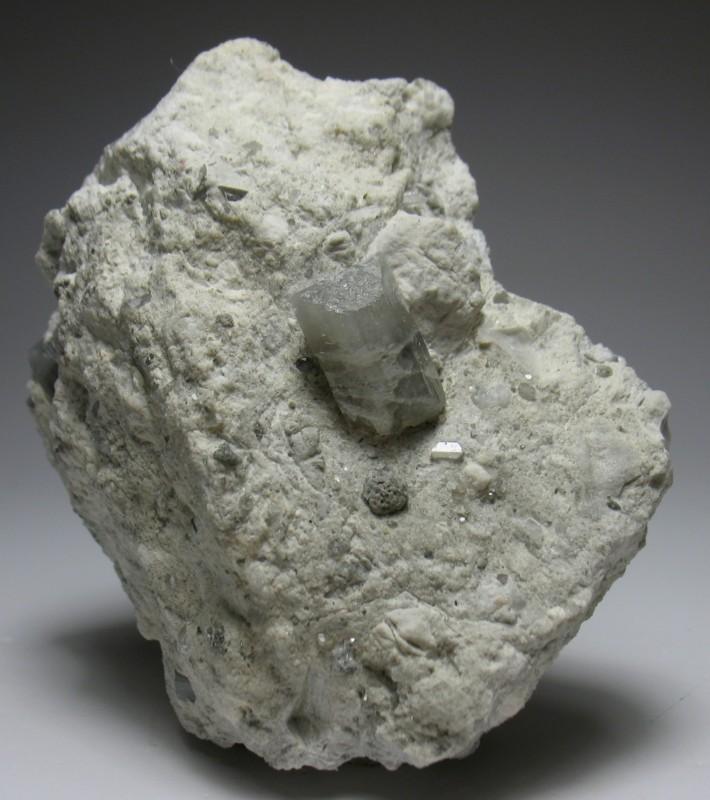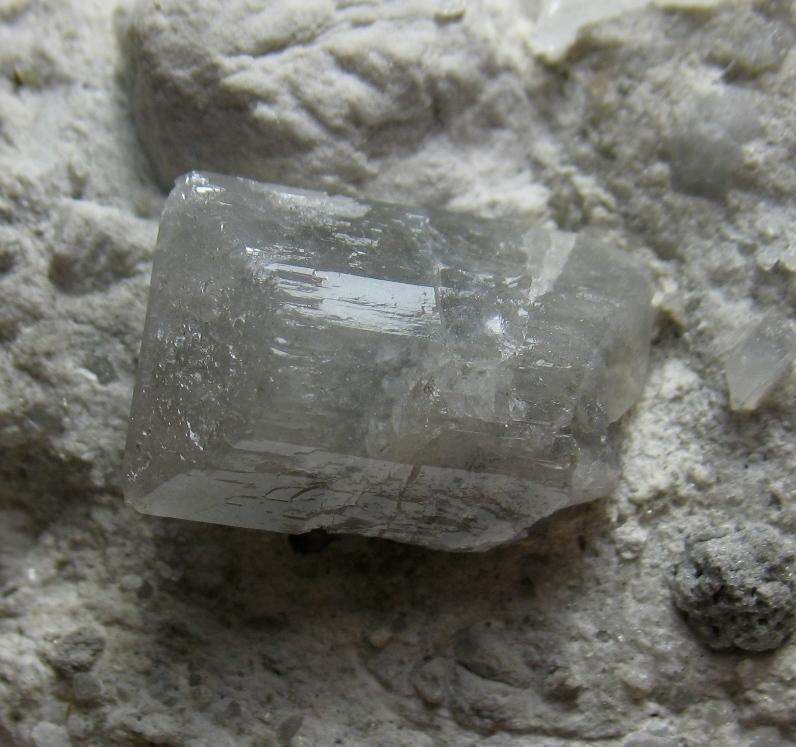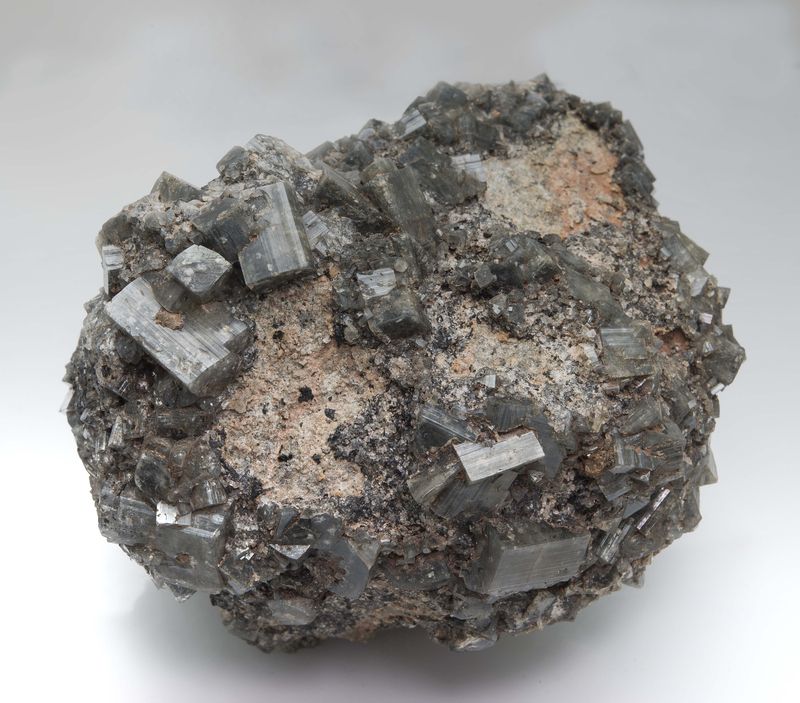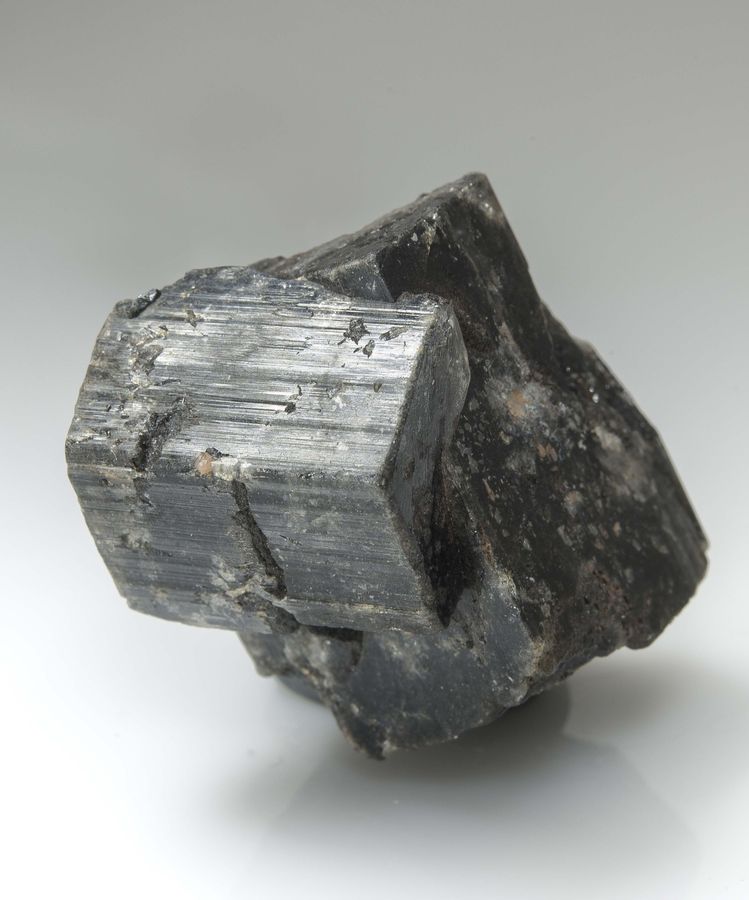| View previous topic :: View next topic |
| Author |
Message |
Antonio Alcaide
Site Admin

Joined: 23 Aug 2009
Posts: 314
Location: Spain



|
 Posted: Mar 25, 2013 07:18 Post subject: Two questions on Bolivian danburite Posted: Mar 25, 2013 07:18 Post subject: Two questions on Bolivian danburite |
|
|
I would like to know what rock is the matrix of bolivian danburites from Alto Chapare. I have read something of dolomite-smectite, talc... It does not look like talc and smectite is a group of minerals. Both of them appear in the locality on Mindat.
I also want to confirm if the grey color of these crystals is due to magnesioriebeckite inclusions (I know Alto Chapare is the type locality for this species).
Regards
| Description: |
Danburite on matrix
Alto Chapare District, Chapare Province, Cochabamba Department, Bolivia
8 x 6,5 x 4 cm |
|
| Viewed: |
15667 Time(s) |

|
| Description: |
Danburite
Alto Chapare District, Chapare Province, Cochabamba Department, Bolivia
8 x 6,5 x 4 cm
Doubly terminated danburite crystal. Size: 1,5 cm |
|
| Viewed: |
15641 Time(s) |

|
_________________
Life is the shortest crystal |
|
| Back to top |
|
 |
alfredo
Site Admin

Joined: 30 Jan 2008
Posts: 1018



|
 Posted: Mar 25, 2013 07:51 Post subject: Re: Two questions on Bolivian danburite Posted: Mar 25, 2013 07:51 Post subject: Re: Two questions on Bolivian danburite |
|
|
Hello, Antonio!
The matrix for the Alto Chapare danburites is an altered saltdome caprock, now composed mainly of anhydrite (more or less altered to gypsum), magnesite, dolomite, smectites (species undefined), talc, more rarely pyrite, boracite... all in varying proportions. In contrast to saltdome caprocks in other countries, there is no calcite or native sulfur, probably because of absence of hydrocarbons which are necessary for the bacterial reduction of gypsum.
Very very rarely (a few tens of specimens among the tens of thousands of known danburite crystals) the danburites are coloured blue by inclusions of magnesioriebeckite. This only happens at the contact between the metaevaporite and the magnesioriebeckite asbestos ores. The rest of the danburites, 99.9%+, are grey, not blue, and do not contain magnesioriebeckite. The grey colour can sometimes be seen under high magnification to be due to included pyrite dust, but perhaps there are other materials causing the colour too. Some people have suggested carbon, but there are no analyses.
Nevertheless, some dealers have "optimistically" labelled all the grey danburites as "blue" danburites and said the "blue" colour (which I lack the imagination to see) is caused by magnesioriebeckite. Caveat emptor.
If you ever have a chance to visit Bolivia, I'll take you to the sites of both the grey and blue danburites. I did several months of research in that area for a government agency in the early 1990s. It's a very wet tropical jungle - quite different from the "normal" bolivian mineral localities!
Cheers,
Alfredo
|
|
| Back to top |
|
 |
Antonio Alcaide
Site Admin

Joined: 23 Aug 2009
Posts: 314
Location: Spain



|
 Posted: Mar 25, 2013 16:52 Post subject: Re: Two questions on Bolivian danburite Posted: Mar 25, 2013 16:52 Post subject: Re: Two questions on Bolivian danburite |
|
|
Hi Alfredo, thank you very much for such a complete explanation. I see the situation regarding "optimistic" dealers :-)
Magnesioriebeckite reminded me of La Juanona Quarry, close to my home, as a possible inclusion for the deep blue color of its quartzs. But I understand that it is responsible for blue color, not for this grey color. However, nice danburites.
And I have to thank you for your invitation, this time for Bolivia. It sounds marvellous. I also remember you inviting me to Franklin... but I am afraid it is more likely you come here to collect some Andalusian minerals...
Cheers
_________________
Life is the shortest crystal |
|
| Back to top |
|
 |
vhairap

Joined: 11 Jun 2012
Posts: 37



|
 Posted: Nov 14, 2021 10:42 Post subject: Re: Two questions on Bolivian danburite Posted: Nov 14, 2021 10:42 Post subject: Re: Two questions on Bolivian danburite |
|
|
| alfredo wrote: | Hello, Antonio!
The matrix for the Alto Chapare danburites is an altered saltdome caprock, now composed mainly of anhydrite (more or less altered to gypsum), magnesite, dolomite, smectites (species undefined), talc, more rarely pyrite, boracite... all in varying proportions. In contrast to saltdome caprocks in other countries, there is no calcite or native sulfur, probably because of absence of hydrocarbons which are necessary for the bacterial reduction of gypsum.
Very very rarely (a few tens of specimens among the tens of thousands of known danburite crystals) the danburites are coloured blue by inclusions of magnesioriebeckite. This only happens at the contact between the metaevaporite and the magnesioriebeckite asbestos ores. The rest of the danburites, 99.9%+, are grey, not blue, and do not contain magnesioriebeckite. The grey colour can sometimes be seen under high magnification to be due to included pyrite dust, but perhaps there are other materials causing the colour too. Some people have suggested carbon, but there are no analyses.
Nevertheless, some dealers have "optimistically" labelled all the grey danburites as "blue" danburites and said the "blue" colour (which I lack the imagination to see) is caused by magnesioriebeckite. Caveat emptor.
If you ever have a chance to visit Bolivia, I'll take you to the sites of both the grey and blue danburites. I did several months of research in that area for a government agency in the early 1990s. It's a very wet tropical jungle - quite different from the "normal" bolivian mineral localities!
Cheers,
Alfredo |
Hi
A few weeks ago, I have received very nice specimens of grey (dark, light grey) Danburite from Larak Island, Persian Gulf, (very similar to Bolivian specimens) where salt diapirs are well exposed. Magnesioriebeckite is also found there and the matrix looks to be altered rhyolite with lots of other minerals including anhydrite, actinolite, pyrite, epidote, ...
_________________
Vachik Hairapetian |
|
| Back to top |
|
 |
lluis
Joined: 17 Nov 2006
Posts: 719


|
 Posted: Nov 14, 2021 11:14 Post subject: Re: Two questions on Bolivian danburite Posted: Nov 14, 2021 11:14 Post subject: Re: Two questions on Bolivian danburite |
|
|
Nevertheless, I own at least one danburite from Alto Chapare, Bolivia, that looks blue to my eyes.
What causes color, no idea (magnesioriebeckite, well, I never thought in...), But still, blue(ish)... Not grey.
With best wishes
Lluís
|
|
| Back to top |
|
 |
vhairap

Joined: 11 Jun 2012
Posts: 37



|
 Posted: Nov 14, 2021 12:04 Post subject: Re: Two questions on Bolivian danburite Posted: Nov 14, 2021 12:04 Post subject: Re: Two questions on Bolivian danburite |
|
|
| lluis wrote: | Nevertheless, I own at least one danburite from Alto Chapare, Bolivia, that looks blue to my eyes.
What causes color, no idea (magnesioriebeckite, well, I never thought in...), But still, blue(ish)... Not grey.
With best wishes
Lluís |
I wonder if there is any paper in which Bolivian danburite is mineralogically described? Anyhow, my eyes see this (Bolivian) grey color. I have attached two photographs of Larak danburite.
All the best
| Mineral: | Danburite |
| Locality: | | Iran |  |
|
| Dimensions: | Largest crystal is c. 2.5 cm |
| Description: |
|
| Viewed: |
10492 Time(s) |

|
_________________
Vachik Hairapetian |
|
| Back to top |
|
 |
vhairap

Joined: 11 Jun 2012
Posts: 37



|
 Posted: Nov 14, 2021 12:14 Post subject: Re: Two questions on Bolivian danburite Posted: Nov 14, 2021 12:14 Post subject: Re: Two questions on Bolivian danburite |
|
|
And this nice cluster
| Dimensions: | Larger crystal in back is c. 2.5 cm |
| Description: |
|
| Viewed: |
10467 Time(s) |

|
_________________
Vachik Hairapetian |
|
| Back to top |
|
 |
alfredo
Site Admin

Joined: 30 Jan 2008
Posts: 1018



|
 Posted: Nov 14, 2021 14:42 Post subject: Re: Two questions on Bolivian danburite Posted: Nov 14, 2021 14:42 Post subject: Re: Two questions on Bolivian danburite |
|
|
Vachik, Federico Ahlfeld (after whom the mineral ahlfeldite is named) published a detailed study of Bolivian danburite at the University of Córdoba, Argentina, back in 1946. I have a copy of his paper somewhere. It's a rather obscure publication and hard to find, but I managed to get a photocopy of it in Argentina in the early 1990s. Ahlfeld however did not recognize the host rock as a saltdome caprock.
I have some danburites from Hormuz island, Iran, which look very much like the Bolivian ones in habit, although the Hormuz danburites are more transparent than the Bolivian ones. I suspect that the geological origin is the same - saltdome caprocks.
|
|
| Back to top |
|
 |
vhairap

Joined: 11 Jun 2012
Posts: 37



|
 Posted: Nov 14, 2021 14:54 Post subject: Re: Two questions on Bolivian danburite Posted: Nov 14, 2021 14:54 Post subject: Re: Two questions on Bolivian danburite |
|
|
| alfredo wrote: | Vachik, Federico Ahlfeld (after whom the mineral ahlfeldite is named) published a detailed study of Bolivian danburite at the University of Córdoba, Argentina, back in 1946. I have a copy of his paper somewhere. It's a rather obscure publication and hard to find, but I managed to get a photocopy of it in Argentina in the early 1990s. Ahlfeld however did not recognize the host rock as a saltdome caprock.
I have some danburites from Hormuz island, Iran, which look very much like the Bolivian ones in habit, although the Hormuz danburites are more transparent than the Bolivian ones. I suspect that the geological origin is the same - saltdome caprocks. |
Very very Interesting, Alfredo. Bolivian and Larak are very similar in origin, mineralogical association and host rock as well. Those from Hormuz Island are bit different in crystal habit and indeed they are transparent. Some from Hormuz are indeed gemmy, grayish-green, gray (dull), and colorless. I will post some photographs of Hormuz material as well. Next step is to analyze the crystals to know more on the elements and inclusions. ICP, microprobe, ...
It would be nice to get Ahlfeld's paper anyway. Thanks
All the best,
Vachik
_________________
Vachik Hairapetian |
|
| Back to top |
|
 |
|





